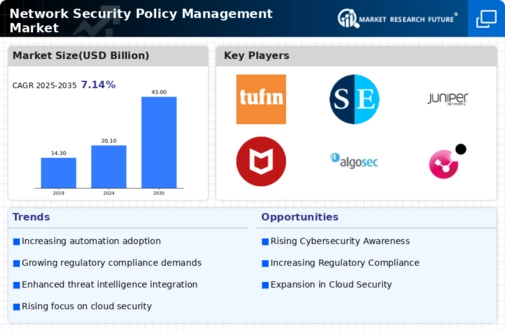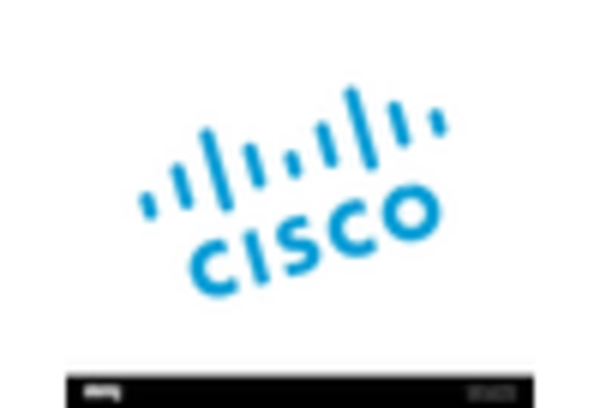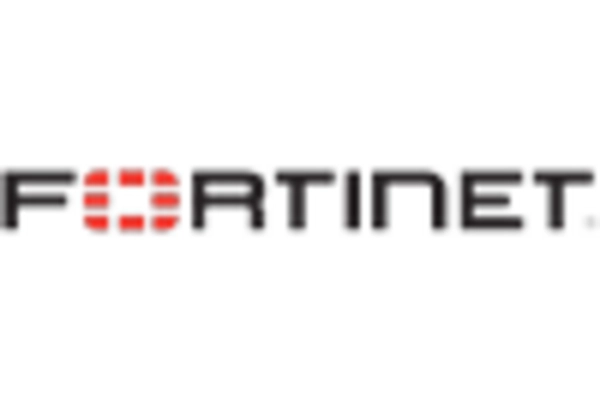Solution
Services
Medium Size Enterprise
Large Scale Enterprise
Change Management
Network Compliance Policy
Vulnerability Assessment
Network Policy Management
IT and Telecom
Energy and Utilities
Retail
Manufacturing
Healthcare
North America Network Security Policy Management by ComponentsSolution
Services
North America Network Security Policy Management by Organisation SizeMedium Size Enterprise
Large Scale Enterprise
North America Network Security Policy Management by Product TypeChange Management
Network Compliance Policy
Vulnerability Assessment
Network Policy Management
North America Network Security Policy Management by End-UserIT and Telecom
Energy and Utilities
Retail
Manufacturing
Healthcare
US Network Security Policy Management by ComponentsSolution
Services
US Network Security Policy Management by Organisation SizeMedium Size Enterprise
Large Scale Enterprise
US Network Security Policy Management by Product TypeChange Management
Network Compliance Policy
Vulnerability Assessment
Network Policy Management
US Network Security Policy Management by End-UserIT and Telecom
Energy and Utilities
Retail
Manufacturing
Healthcare
CANADA Network Security Policy Management by ComponentsSolution
Services
CANADA Network Security Policy Management by Organisation SizeMedium Size Enterprise
Large Scale Enterprise
CANADA Network Security Policy Management by Product TypeChange Management
Network Compliance Policy
Vulnerability Assessment
Network Policy Management
CANADA Network Security Policy Management by End-UserIT and Telecom
Energy and Utilities
Retail
Manufacturing
Healthcare
Europe Network Security Policy Management by ComponentsSolution
Services
Europe Network Security Policy Management by Organisation SizeMedium Size Enterprise
Large Scale Enterprise
Europe Network Security Policy Management by Product TypeChange Management
Network Compliance Policy
Vulnerability Assessment
Network Policy Management
Europe Network Security Policy Management by End-UserIT and Telecom
Energy and Utilities
Retail
Manufacturing
Healthcare
Germany Network Security Policy Management by ComponentsSolution
Services
Germany Network Security Policy Management by Organisation SizeMedium Size Enterprise
Large Scale Enterprise
Germany Network Security Policy Management by Product TypeChange Management
Network Compliance Policy
Vulnerability Assessment
Network Policy Management
Germany Network Security Policy Management by End-UserIT and Telecom
Energy and Utilities
Retail
Manufacturing
Healthcare
France Network Security Policy Management by ComponentsSolution
Services
France Network Security Policy Management by Organisation SizeMedium Size Enterprise
Large Scale Enterprise
France Network Security Policy Management by Product TypeChange Management
Network Compliance Policy
Vulnerability Assessment
Network Policy Management
France Network Security Policy Management by End-UserIT and Telecom
Energy and Utilities
Retail
Manufacturing
Healthcare
UK Network Security Policy Management by ComponentsSolution
Services
UK Network Security Policy Management by Organisation SizeMedium Size Enterprise
Large Scale Enterprise
UK Network Security Policy Management by Product TypeChange Management
Network Compliance Policy
Vulnerability Assessment
Network Policy Management
UK Network Security Policy Management by End-UserIT and Telecom
Energy and Utilities
Retail
Manufacturing
Healthcare
ITALY Network Security Policy Management by ComponentsSolution
Services
ITALY Network Security Policy Management by Organisation SizeMedium Size Enterprise
Large Scale Enterprise
ITALY Network Security Policy Management by Product TypeChange Management
Network Compliance Policy
Vulnerability Assessment
Network Policy Management
ITALY Network Security Policy Management by End-UserIT and Telecom
Energy and Utilities
Retail
Manufacturing
Healthcare
Spain Network Security Policy Management by ComponentsSolution
Services
Spain Network Security Policy Management by Organisation SizeMedium Size Enterprise
Large Scale Enterprise
Spain Network Security Policy Management by Product TypeChange Management
Network Compliance Policy
Vulnerability Assessment
Network Policy Management
Spain Network Security Policy Management by End-UserIT and Telecom
Energy and Utilities
Retail
Manufacturing
Healthcare
Rest Of Europe Network Security Policy Management by ComponentsSolution
Services
REST OF EUROPE Network Security Policy Management by Organisation SizeMedium Size Enterprise
Large Scale Enterprise
REST OF EUROPE Network Security Policy Management by Product TypeChange Management
Network Compliance Policy
Vulnerability Assessment
Network Policy Management
REST OF EUROPE Network Security Policy Management by End-UserIT and Telecom
Energy and Utilities
Retail
Manufacturing
Healthcare
Asia-Pacific Network Security Policy Management by ComponentsSolution
Services
Asia-Pacific Network Security Policy Management by Organisation SizeMedium Size Enterprise
Large Scale Enterprise
Asia-Pacific Network Security Policy Management by Product TypeChange Management
Network Compliance Policy
Vulnerability Assessment
Network Policy Management
Asia-Pacific Network Security Policy Management by End-UserIT and Telecom
Energy and Utilities
Retail
Manufacturing
Healthcare
China Network Security Policy Management by ComponentsSolution
Services
China Network Security Policy Management by Organisation SizeMedium Size Enterprise
Large Scale Enterprise
China Network Security Policy Management by Product TypeChange Management
Network Compliance Policy
Vulnerability Assessment
Network Policy Management
China Network Security Policy Management by End-UserIT and Telecom
Energy and Utilities
Retail
Manufacturing
Healthcare
Japan Network Security Policy Management by ComponentsSolution
Services
Japan Network Security Policy Management by Organisation SizeMedium Size Enterprise
Large Scale Enterprise
Japan Network Security Policy Management by Product TypeChange Management
Network Compliance Policy
Vulnerability Assessment
Network Policy Management
Japan Network Security Policy Management by End-UserIT and Telecom
Energy and Utilities
Retail
Manufacturing
Healthcare
India Network Security Policy Management by ComponentsSolution
Services
India Network Security Policy Management by Organisation SizeMedium Size Enterprise
Large Scale Enterprise
India Network Security Policy Management by Product TypeChange Management
Network Compliance Policy
Vulnerability Assessment
Network Policy Management
India Network Security Policy Management by End-UserIT and Telecom
Energy and Utilities
Retail
Manufacturing
Healthcare
Australia Network Security Policy Management by ComponentsSolution
Services
Australia Network Security Policy Management by Organisation SizeMedium Size Enterprise
Large Scale Enterprise
Australia Network Security Policy Management by Product TypeChange Management
Network Compliance Policy
Vulnerability Assessment
Network Policy Management
Australia Network Security Policy Management by End-UserIT and Telecom
Energy and Utilities
Retail
Manufacturing
Healthcare
Rest of Asia-Pacific Network Security Policy Management by ComponentsSolution
Services
Rest of Asia-Pacific Network Security Policy Management by Organisation SizeMedium Size Enterprise
Large Scale Enterprise
Rest of Asia-Pacific Network Security Policy Management by Product TypeChange Management
Network Compliance Policy
Vulnerability Assessment
Network Policy Management
Rest of Asia-Pacific Network Security Policy Management by End-UserIT and Telecom
Energy and Utilities
Retail
Manufacturing
Healthcare
Rest of the World Network Security Policy Management by ComponentsSolution
Services
Rest of the World Network Security Policy Management by Organisation SizeMedium Size Enterprise
Large Scale Enterprise
Rest of the World Network Security Policy Management by Product TypeChange Management
Network Compliance Policy
Vulnerability Assessment
Network Policy Management
Rest of the World Network Security Policy Management by End-UserIT and Telecom
Energy and Utilities
Retail
Manufacturing
Healthcare
Middle East Network Security Policy Management by ComponentsSolution
Services
Middle East Network Security Policy Management by Organisation SizeMedium Size Enterprise
Large Scale Enterprise
Middle East Network Security Policy Management by Product TypeChange Management
Network Compliance Policy
Vulnerability Assessment
Network Policy Management
Middle East Network Security Policy Management by End-UserIT and Telecom
Energy and Utilities
Retail
Manufacturing
Healthcare
Africa Network Security Policy Management by ComponentsSolution
Services
Africa Network Security Policy Management by Organisation SizeMedium Size Enterprise
Large Scale Enterprise
Africa Network Security Policy Management by Product TypeChange Management
Network Compliance Policy
Vulnerability Assessment
Network Policy Management
Africa Network Security Policy Management by End-UserIT and Telecom
Energy and Utilities
Retail
Manufacturing
Healthcare
Latin America Network Security Policy Management by ComponentsSolution
Services
Latin America Network Security Policy Management by Organisation SizeMedium Size Enterprise
Large Scale Enterprise
Latin America Network Security Policy Management by Product TypeChange Management
Network Compliance Policy
Vulnerability Assessment
Network Policy Management
Latin America Network Security Policy Management by End-UserIT and Telecom
Energy and Utilities
Retail
Manufacturing
Healthcare

















Leave a Comment